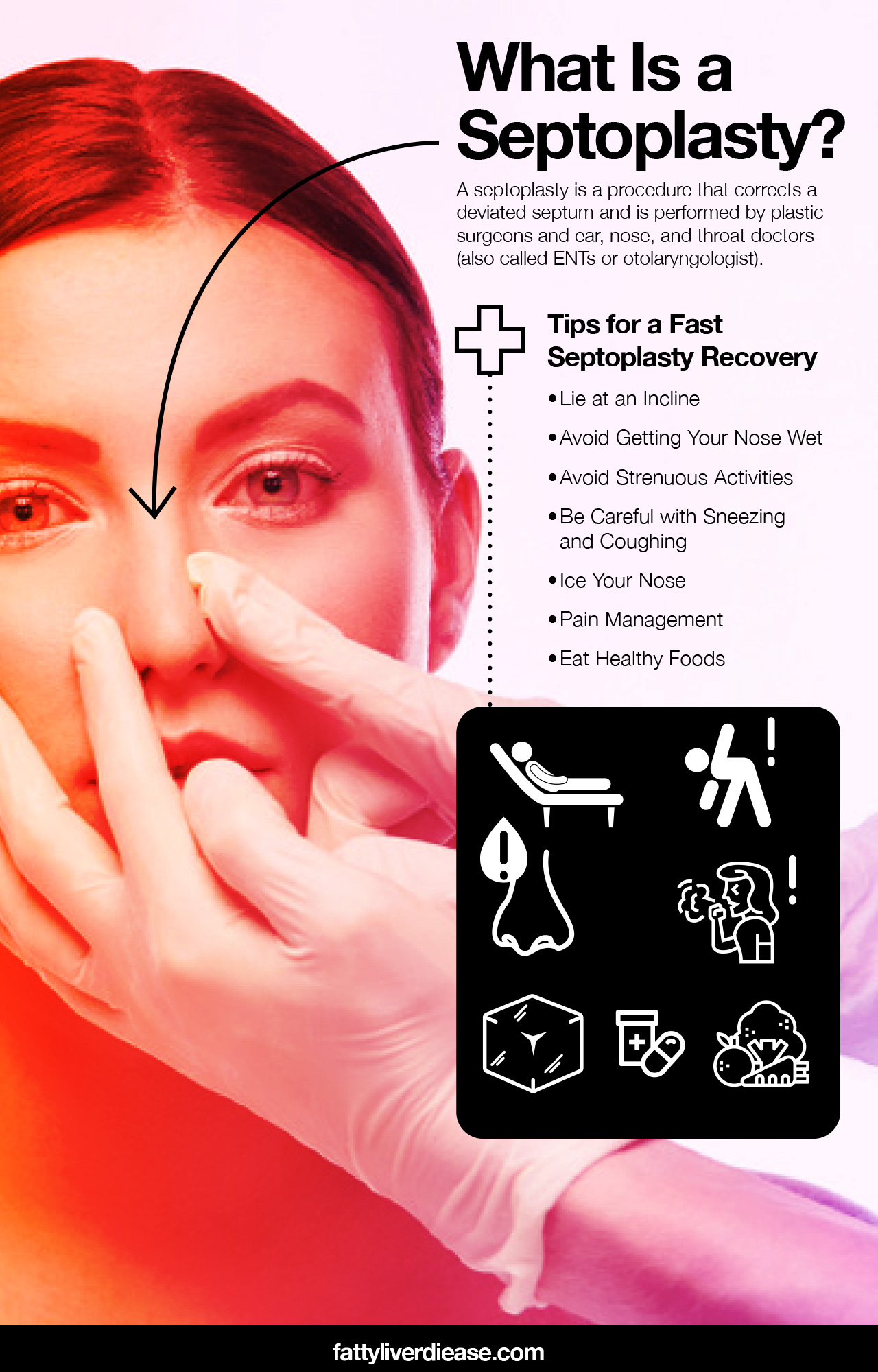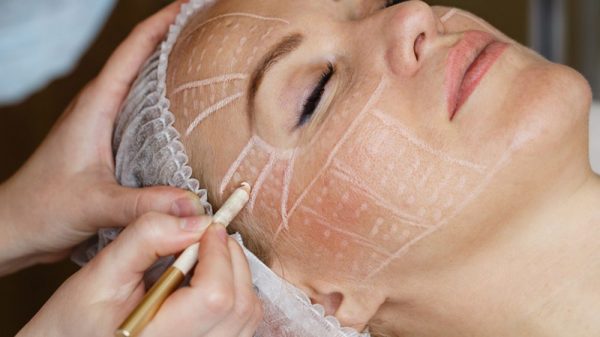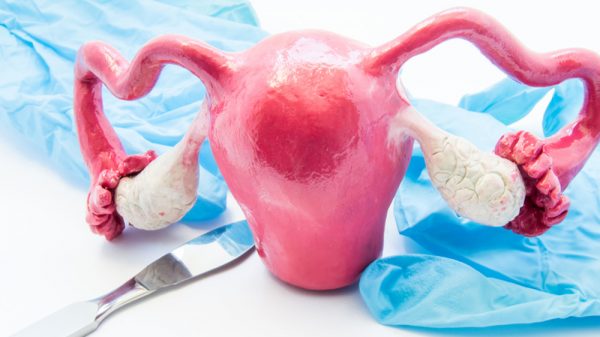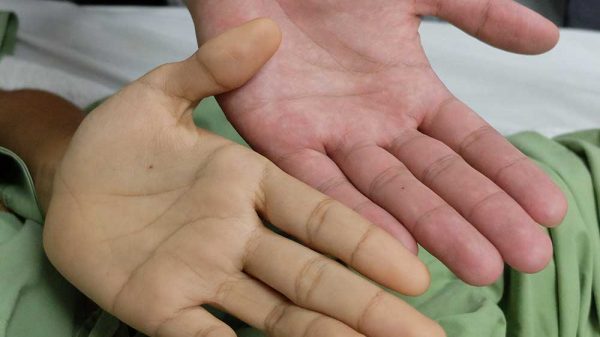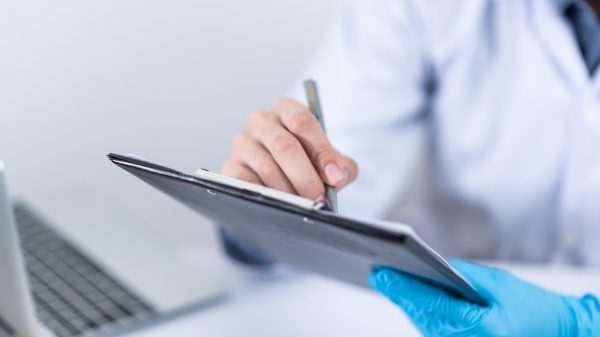A septoplasty is related to a rhinoplasty because both involve restructuring or correcting the nasal structure. In fact, the two procedures are often performed during the same operation. If you are considering a septoplasty or are booked for an upcoming procedure, then you’ve come to the right place.
Why would I need a septoplasty? What should I expect during a septoplasty? How do I support the septoplasty recovery process? Here we go through all of the answers to your questions about the septoplasty procedure.
What Is a Septoplasty?
A septoplasty is a procedure that corrects a deviated septum and is performed by plastic surgeons and ear, nose, and throat doctors (also called ENTs or otolaryngologists). Sometimes, a septoplasty is performed alongside a plastic surgery procedure to improve both the function and the aesthetic appearance of the nose. Other times, the septoplasty is performed on its own.
The septum is the center part of the nose that forms the two nasal passages. Many people have a slightly crooked septum that causes no symptoms. If the septum is very crooked, it can protrude into one of the nasal passages and impede normal airflow. This is diagnosed as a deviated septum.
A surgeon corrects a deviated septum by going up through your nasal passage and reshaping the bone and cartilage that makes up the nasal septum. The surgeon will not need to make an incision on the outside of your nose, so your nose will heal seamlessly.
How Do I Know If I Have a Deviated Septum?
If you have a deviated septum that would benefit from surgery, you will most likely experience some bothersome symptoms, such as:
- Difficulty breathing through one of the nostrils: A deviated septum can be so extreme that it essentially cuts off airflow in one nostril. This can be very irritating, especially when trying to sleep.
- Congestion and sinusitis: A deviated septum can prevent proper drainage from the nose, leading to prolonged nasal congestion, trapped bacteria, and the development of sinus infections.
- Nosebleeds: Nosebleeds are common if you have a deviated septum. Unusual airflow through the nose can lead to excessive dryness, which can cause tearing of the delicate nasal membrane and subsequent nosebleeds.
Keep in mind that there are many causes of blocked nasal passages. For example, allergies and colds can cause nasal irritation and congestion that persists for several weeks. Enlarged or inflamed turbinates may also block airflow through the nose. Turbinates are appendages in the nose that are responsible for maintaining a balanced temperature and humidity level of the air flowing through the nose. Your physician can prescribe allergy medication or a steroid nasal spray to help your symptoms. In some cases, a turbinate reduction procedure may be recommended.
How Long Does It Take to Recover from a Deviated Septum Surgery?
Deviated septum surgery recovery takes several months in order to feel full results. However, swelling and other symptoms should subside within a few weeks. Keep reading through the next section to find out how to speed up the recovery process after a septoplasty.
Tips for a Fast Septoplasty Recovery
If you’ve undergone a septoplasty, it’s important to take the proper steps after surgery, to support the healing process.
1. Lie at an Incline
Getting plenty of rest and sleep is crucial to support your healing nose through the recovery period. You will likely feel very sleepy the first day as you recover from general anesthesia. During the first week of the recovery period, resting will help fortify your immune system as you heal. Just be sure to lie with your head elevated to reduce pressure in the nasal cavity and make sure blood and fluids drain as needed.
2. Avoid Getting Your Nose Wet
If you have splints, bandages, or nasal packing, it’s especially important not to get your nose wet. Damp bandages and packing provide a breeding ground for bacterial, increasing the risk of developing
3. Avoid Strenuous Activities
Vigorous exercise can temporarily increase blood pressure and increase the risk of nasal bleeding. Save intense aerobic activity and weight lifting for when you’ve made a full recovery. It’s a good idea to talk to your surgeon about when you are cleared for engaging in strenuous exercise.
4. Be Careful with Sneezing and Coughing
If you need to sneeze or cough, make sure you keep your mouth open to reduce any pressure on the nasal cavity. After septum surgery, sinus surgery, or any kind of nasal procedure, a sneeze or cough can be damaging to the nose and elongate the healing time.
5. Ice Your Nose
If recommended, apply soft ice packs to your nose to help mitigate swelling and bruising. Make sure that the ice pack is not too hard or unwieldy, as it could damage your healing nose and elongate recovery.
6. Pain Management
Your surgeon may prescribe prescription painkillers to be taken for a couple of days following your septoplasty procedure. After you stop prescription painkillers, over-the-counter pain medications like acetaminophen can be helpful for managing any residual pain. Avoid ibuprofen in the immediate aftermath of your surgery since NSAIDs and any other blood thinner can increase the risk of bleeding.
7. Eat Healthy Foods
The foods you eat directly impact the healing process. To support healing after a septoplasty procedure, eat plenty of foods that are rich in vitamins, minerals, antioxidants, fiber, healthy fats, and essential amino acids. Vitamins, minerals, and antioxidants help reduce oxidative stress while supporting healing. Fiber combats any constipation resulting from prescription painkillers and encourages regular bowel movements. Healthy fats decrease inflammation, and essential amino acids found in high-quality protein provide the raw materials to strengthen the immune system and rebuild damaged tissues.
Septoplasty Recovery: Conclusion
The septoplasty procedure is a common procedure used to correct a deviated septum. There are a number of ways you can support the healing process post-surgery, such as protecting your nose from pressure, getting plenty of rest, and eating healthy foods. After your corrected septum heals, you will be able to enjoy easier breathing, fewer sinus infections, and a higher quality of life.
